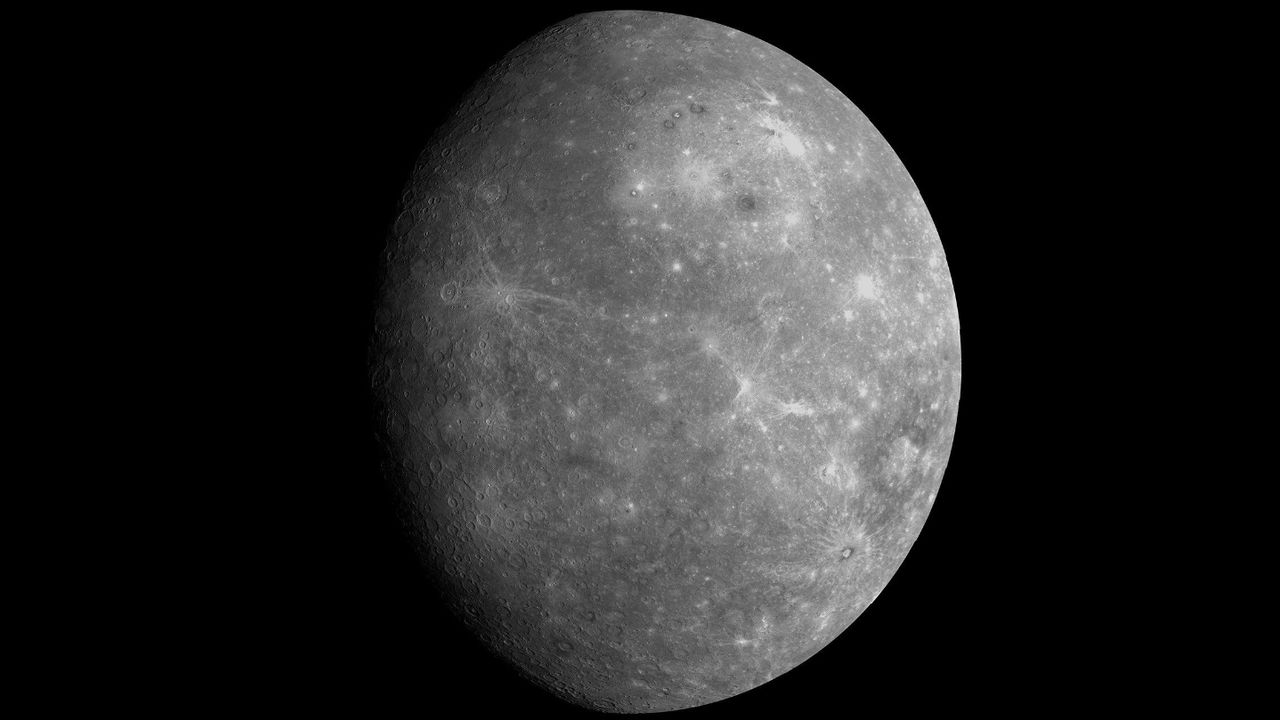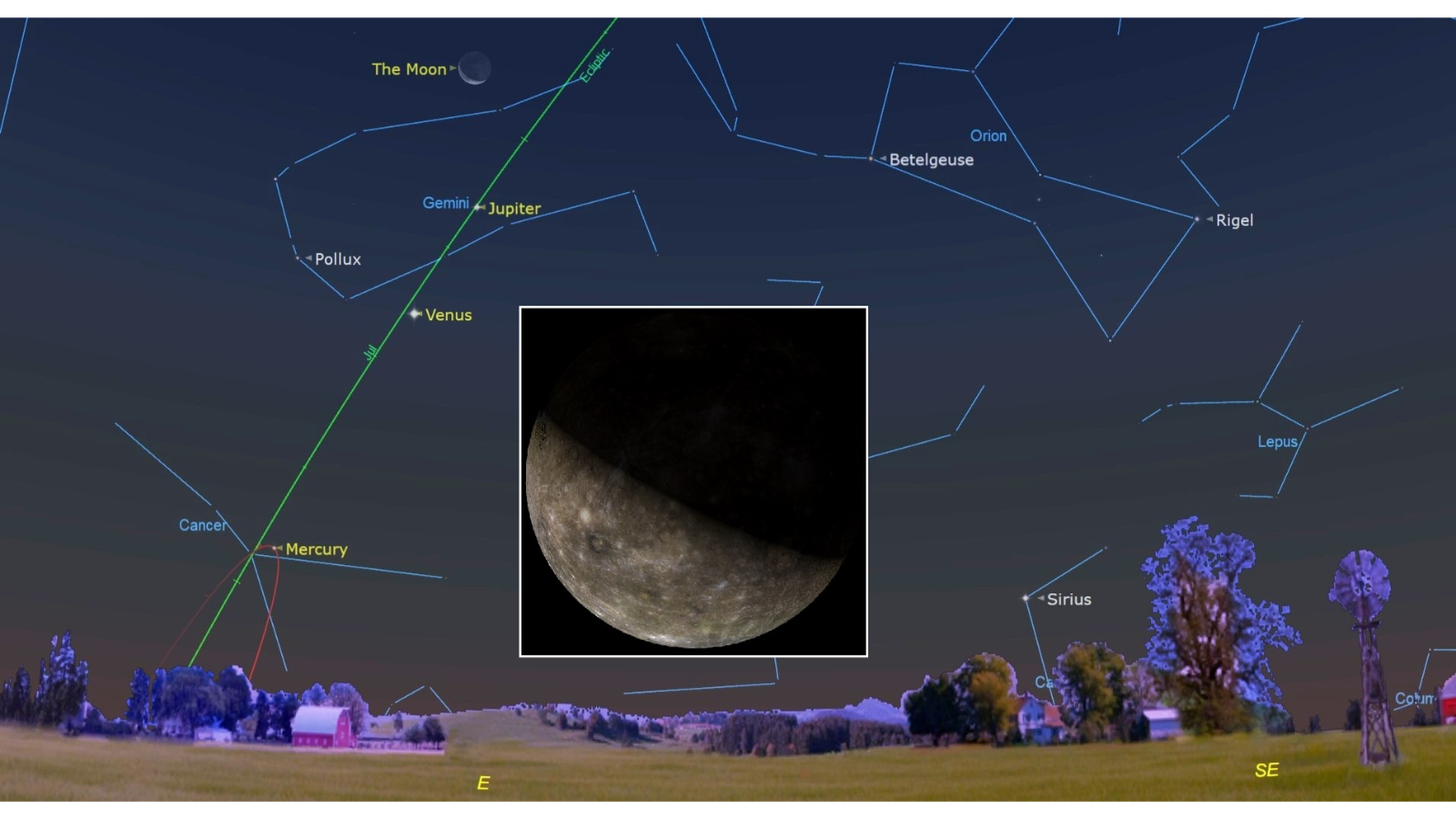
Mercury will be farthest from the sun on Tuesday (Aug. 19), granting early risers a perfect opportunity to spot the fleet-footed world somewhat separated from the glare of our parent star.
Mercury treads such a tight orbit around the sun that it never strays far from the horizon. This makes it one of the trickiest planets to see, especially compared to Mars, Jupiter, Saturn, Uranus and Neptune, whose distant orbits beyond Earth allow them to appear high in the night sky depending on the time of year.
Astronomers call Mercury's farthest point from our the sun in the morning sky the point of "greatest western elongation," which will next occur at 8:25 a.m. EDT (12:25 GMT) on Tuesday.
Greatest elongation is the ideal time to spot Mercury during its morning appearance. Even then, it won't climb very high. For observers in New York, for example, the planet will rise a mere 16 degrees above the eastern horizon by the time the sun slips into view, making it a challenging yet rewarding target to hunt through the summer sky.

To spot Mercury, look to the east in the hour preceding dawn. The rocky world will shine low among the stars of the constellation Cancer, with Venus and Jupiter forming a line to its upper right, below a 14%-lit waning crescent moon.
The light of the rising sun will begin to swamp Mercury when it is a mere 10 degrees above the horizon, about the width of your outstretched fist, so be sure to find a location with a clear view to the east to give yourself the best chance of spotting the elusive planet.

Want to see the planets of our solar system for yourself? The Celestron NexStar 4SE is ideal for beginners wanting quality, reliable and quick views of celestial objects. For a more in-depth look at our Celestron NexStar 4SE review.
Mercury will appear as a bright "morning star" to the unaided eye on the morning of Aug. 19. Viewing the rocky world through a telescope with an aperture of 4 inches or more under good atmospheric conditions may reveal Mercury's moon-like phases. On the morning of Aug. 19, the world will appear as a tiny 41%-lit crescent, though utmost care must be taken to never point your telescope near the rising sun, as doing so can permanently damage your vision.
Stargazers interested in seeing the phases of Mercury and other solar system worlds up close should check out our guide to the best telescopes available in 2025
Editor's Note: If you capture an image of Mercury and want to share it with Space.com's readers, then please send your photo(s), comments, and your name and location to spacephotos@space.com.







